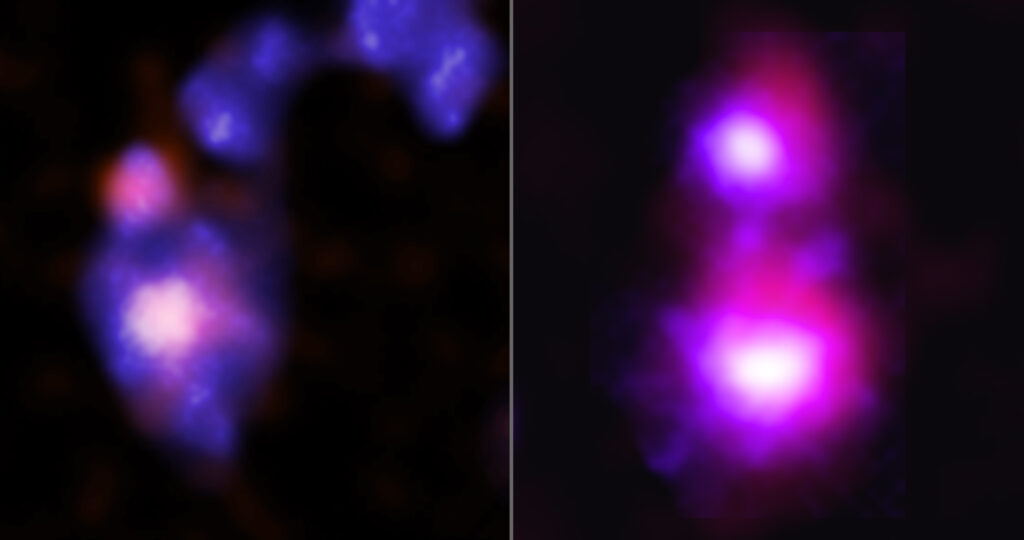The Chandra X-ray telescope photographed two pairs of supermassive black holes. They are located in dwarf galaxies that will collide with each other in the near future.

Dwarf galaxies are objects which have a mass of less than 3 billion solar (this is about 20 times less than the mass of the Milky Way). Astronomers had long suspected that their mergers gave birth to all existing large galaxies. The problem is that even modern technologies do not make it possible to observe mergers of dwarf galaxies of the first generation, because they are extremely dim and are located at great distances. Another tactic — the search for mergers of dwarf galaxies closer. Until recently, it also did not bring success.
To overcome this limitation, astronomers have relied on black holes located in their centers. During galactic mergers, they absorb a large amount of material. It heats up to a temperature of a million degrees and emits a large amount of X-ray radiation. Therefore, the researchers used the Chandra telescope to find close pairs of bright X-ray sources corresponding to black holes in two colliding dwarf galaxies.
This tactic proved successful. Astronomers have managed to find two pairs of colliding dwarf galaxies. The first is located in the Abell 133 cluster at a distance of 760 million light-years from Earth. It is in the late stage of fusion and has a long tail caused by tidal effects from the collision. The authors of the new study named it “Mirabilis” after an endangered species of hummingbird known for its exceptionally long tails.
The second pair is located in the Abell 1758S cluster at a distance of 3.2 billion light-years from Earth. The researchers name the dwarf galaxies that make up it “Elstir” and “Vinteuil” in honor of the fictional artists from “In search of lost time” by Marcel Proust. Unlike the previous one, this pair is at an early stage of merging. But the galaxies are already connected by a bridge consisting of stars and gas ejected during the tidal interaction.
Astronomers intend to continue observations of the found pairs. This will allow them to study the processes that are crucial for understanding the origin of galaxies and their black holes at the earliest stages of the Universe’s development.
According to https://www.nasa.gov
Follow us on Twitter to get the most interesting space news in time
https://twitter.com/ust_magazine

